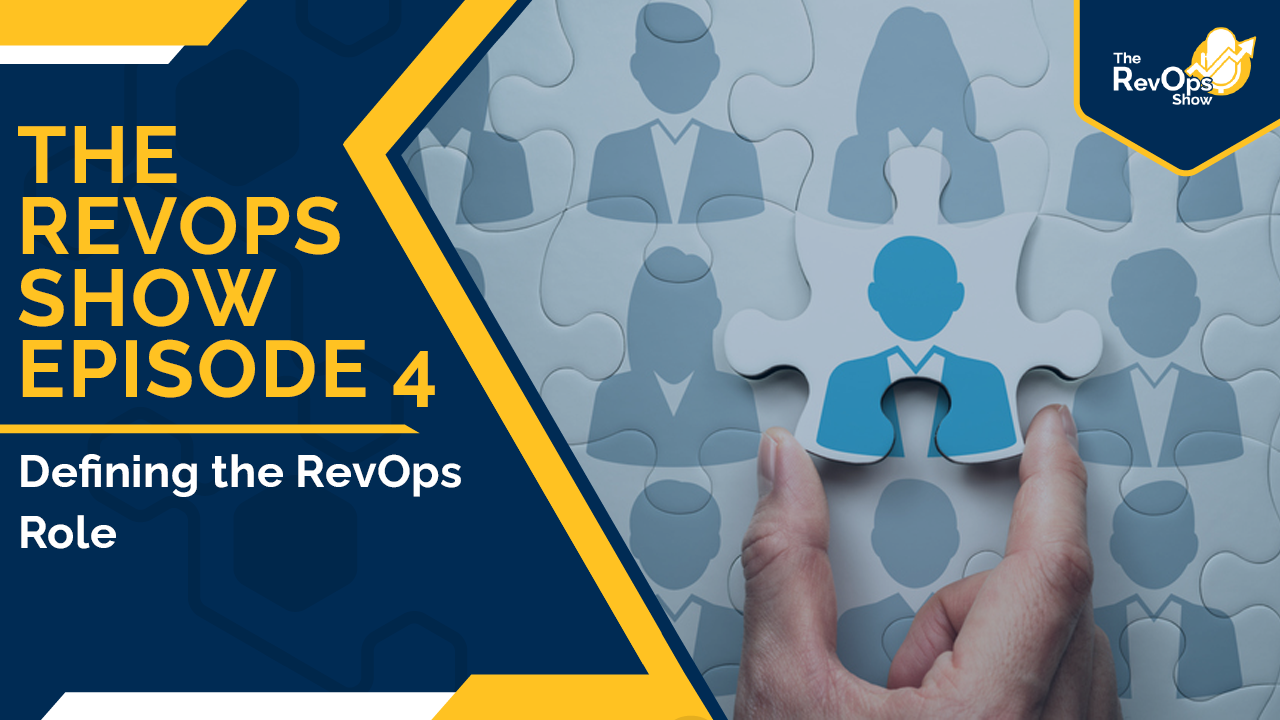Welcome back to the RevOps Show! Jess wants to talk about creating a RevOps role within your organization. Doug believes you should just hire us. But that wouldn’t make for a good podcast episode now would it. In all seriousness, as RevOps has become increasingly popular, more organizations are looking to create an actual role for RevOps. What does that look like? Listen to the episode to find out!
Audio:
Video:

Additional Resources:
- Revenue Acceleration Manifesto
- [Blog Post] What is Revenue Operations
- [Webinar] How to Successfully Launch & Integrate RevOps
Show Notes:
First and foremost, what is RevOps?
Doug was going to delve into some presentations we’ve made on the topic, but decided against it. We do have a blog post on What is Revenue Operations? We also have a webinar OnDemand for launching and implementing a successful RevOps function.
This question is a mysteriously important one because however you define RevOps, that’s going to have a disproportionate influence whether you articulate the definition or not. One of the motivations behind the RevOps Show is due to the term being thrown around. We’ve been interviewing RevOps leaders and one thing we’ve been finding is there is not a clear definition of the role and what it means. That’s damaging both to the people working within RevOps, and it also puts the subject to the winds. The expectations need to be managed.
RevOps: a holistic function; orchestrates all facets of your market facing revenue/customer acquisition and expansion (people, structure, teams, activities, etc.) for the purpose of enabling the organization to increase its likelihood of achieving its objectives with either lower costs and/or less risk.
The objective plays a role in managing the trade-offs. Is the juice worth the squeeze?
How does all of this translate into a specific role within an organization? Or roles because it could be more than one role.
You must ask yourself what do you want the role to do? There’s no one answer or one size fits all to this question. Your formula is going to be your formula. The job needs to drive the job description; the job description should not drive the business.
We created a framework - The Revenue Acceleration Framework to help lay down a foundation. It was built to define revenue operations. It was a framework that we built looking at successful companies where the role of revenue operations became really clear. How do you define the role? You have to have a strong framework, whether it’s The Revenue Acceleration Framework or something else. Think of it this way, would you build a house without blueprints?
One thing you have to think about is what’s preventing you from getting juice for the squeeze. What would enable you to get more juice from the squeeze? Where’s the barrier, where’s the opportunity, where’s the constraint, what’s the bottleneck? This is the hard, academic stuff you have to get through in order to paint a picture of what this role looks like.
Who does RevOps report to?
It’s still too early to answer this question. Some questions you can ask in the meantime include, what’s the norm of companies that have revenue operations functions? Doug has seen RevOps report to CEOs (which makes no sense to him). He’s seen them report to operations. It all depends on the size, scope, and structure of the organization.
What’s the right type of skill set or background for the RevOps role? What’s the right type of person for these roles?
Doug highly dislikes this question because successful people don’t necessarily look like successful people. What a really good RevOps person has is breadth and depth. Critical thinking is major; deep curiosity is major. You have to have a systems mind, you have to see patterns, and you have to think holistically. And you have to be a little bit of a son of a bitch because RevOps is a lot. You’re the one inflicting change.
If there’s one thing you take away from this episode, it’s that you need to build out your business process. Make sure you have a framework in place when you’re defining the role.
Next Steps:
-
Follow Jess, Doug & Imagine on socials for updates on the show or other insights:
-
Doug Davidoff: Twitter - @dougdavidoff | LinkedIn
-
Jess Cardenas: Twitter - @JessDCardenas | LinkedIn
-
Imagine Business Development: Twitter - @DemandCreator | LinkedIn
-
-
Subscribe to the show on Spotify & Apple Podcasts
-
Check out Let's Play RevOps on Twitch for more commentary on this topic
-
Watch the Next Episode: Episode 5: How to Increase CRM Adoption
